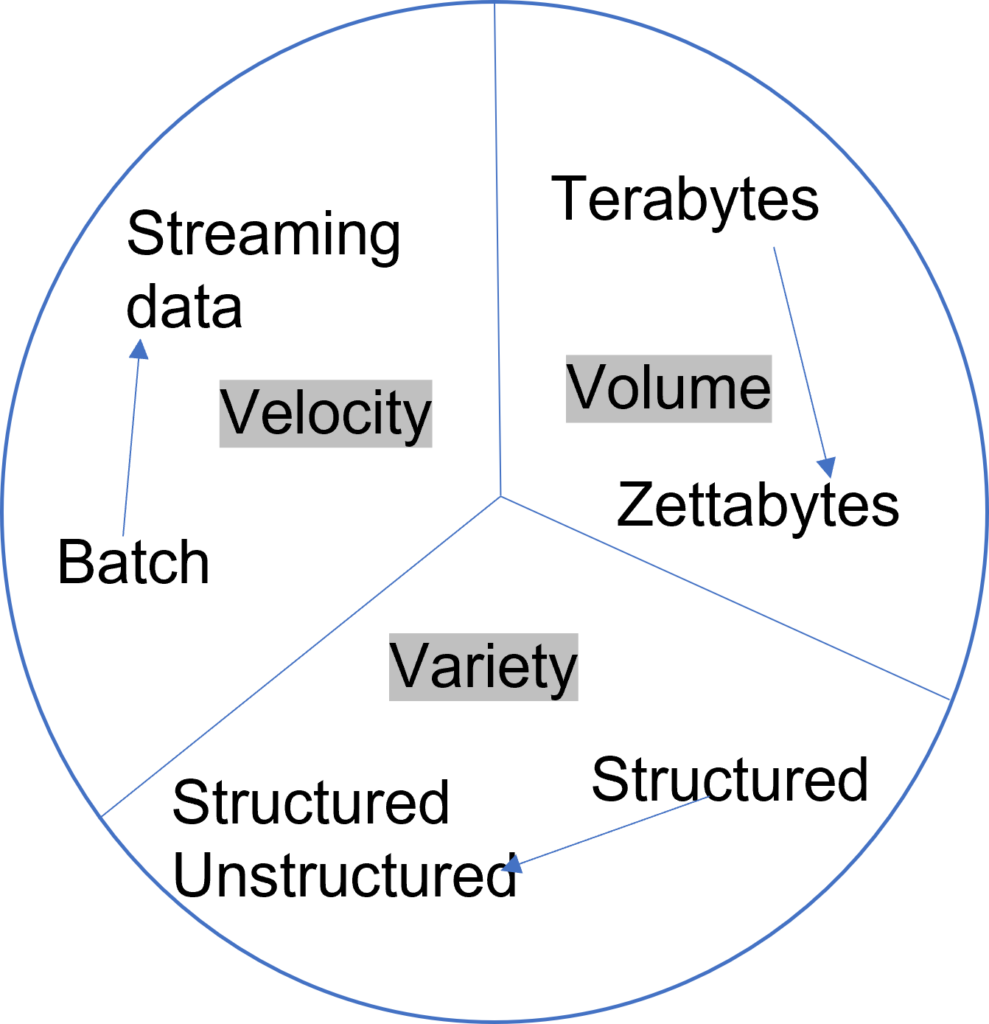What is Big Data?
Big data refers to the large collection of structured, semi-structured and unstructured data mostly collected from Internet connected devices. This represents the massive amount of data an organization is exposed to daily and cannot be managed by traditional database management systems. It led to the evolution of model-driven paradigm to data-driven paradigm. It is always important how an organization use this large data to yield insights that results in better informed decisions. The importance of big data is not in the amount of data but how you use this data.
Characteristics of Big Data
The term big data refers to large data set (Volume), structured, semi-structured and unstructured data (Variety), arriving faster than before (Velocity). These are 3V.
3V:

Volume:
The volume of data stored today is growing exponentially and exploding. Now the data volume has grown from terabytes to zettabytes.
Velocity:
Represents both the rate at which the data is generated and needs to be handled.
Variety:
As data collected is not from a single source the variety of data also differs according to the source like emails, web, text or sensors by structured or unstructured data.
Now as big data evolved in due course of time the characteristics also evolved from 3Vs to 6Vs.
6V:
As data grows tremendously in todays internet world, today’s big data is tomorrow’s small data.